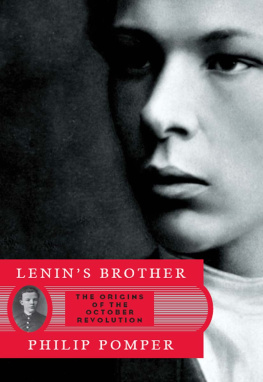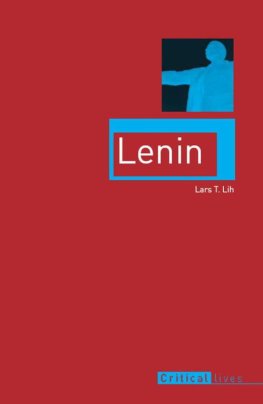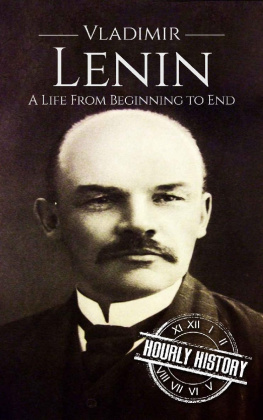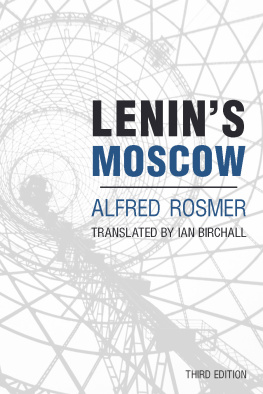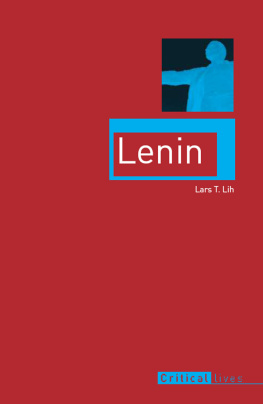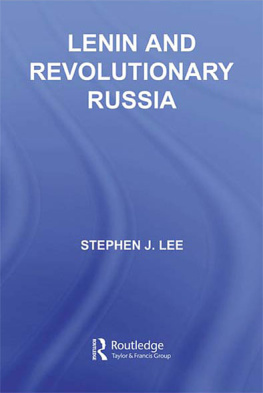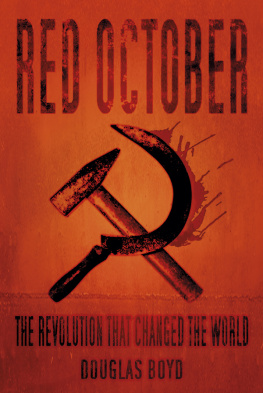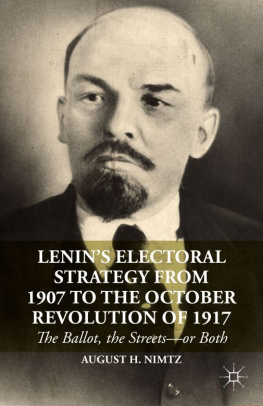In this deeply researched biography, Pomper turns his talents and experience as an historian of the Russian revolutionary intelligentsia to Alexander Ulyanov, who has long deserved a study of this distinction.
Norman M. Naimark,
R OBERT AND F LORENCE M C D ONNELL P ROFESSOR OF E AST E UROPEAN S TUDIES , S TANFORD U NIVERSITY
A fascinating read. Philip Pomper is a brilliant psychoanalytic historian, and Lenins Brother is an important contribution to our understanding of the Russian revolution.
This absorbing narrative illuminates the psychological motivations for terrorism and illustrates how universal these patterns are. The idea of sacrificing ones life in taking the life of others inspired Russian revolutionaries a hundred years before suicide terrorism grabbed the worlds attention. The story is also skillfully situated in its historical context: the terrorist at the center of the hapless plot to assassinate the tsar was the older brother of Lenin.
A definitive account of the attempt to kill Alexander III, a conspiracy that included Lenins older brother. Pomper shows how his brothers execution by tsarist hangmen ultimately precipitated Lenins revengethe destruction of the Old Regime and the murder of its imperial family.
Robert C. Williams,
V AIL P ROFESSOR OF H ISTORY E MERITUS ,
D AVIDSON C OLLEGE
LENINS BROTHER
The Origins of the October Revolution
PHILIP POMPER
W. W. NORTON & COMPANY
NEW YORK LONDON
C OPYRIGHT 2010 BY P HILLIP P OMPER
EXCERPT FROM LESS THAN ONE FROM LESS THAN ONE BY JOSEPH BRODSKY. COPYRIGHT 1986 BY JOSEPH BRODSKY.
EXCERPT FROM LESS THAN ONE FROM LESS THAN ONE BY JOSEPH BRODSKY. COPYRIGHT 1986 BY JOSEPH BRODSKY, THE NEW YORK REVIEW OF BOOKS, VOL. 26, NO. 14, SEPT. 27, 1979, WWW.NYBOOKS.COM/ARTICLES/7682, P. 3 OF 12. REPRODUCED BY PERMISSION OF PENGUIN BOOKS LTD.
A LL RIGHTS RESERVED
F OR INFORMATION ABOUT PERMISSION TO REPRODUCE SELECTIONS FROM THIS BOOK, WRITE TO P ERMISSIONS , W. W. N ORTON & C OMPANY , I NC ., 500 F IFTH A VENUE , N EW Y ORK , NY 10110
L IBRARY OF C ONGRESS C ATALOGING-IN -P UBLICATION D ATA
P OMPER , P HILIP .
L ENINS BROTHER : THE ORIGINS OF THE O CTOBER R EVOLUTION /
P HILIP P OMPER .1 ST ED.
P.CM .
I NCLUDES BIBLIOGRAPHICAL REFERENCES .
ISBN: 978-0-393-07713-1
1. U LYANOV , A LEKSANDR , 18661887.2. U LYANOV , A LEKSANDR , 18661887I NFLUENCE . 3. L ENIN , V LADIMIR I LYICH , 18701924F AMILY . 4. R EVOLUTIONARIES R USSIA B IOGRAPHY . 5. B ROTHERS R USSIA B IOGRAPHY . 6. L ENIN , V LADIMIR I LYICH , 18701924P OLITICAL AND SOCIAL VIEWS . 7. S OVIET U NION H ISTORY R EVOLUTION , 19171921C AUSES . I. T ITLE .
DK236.U4P66 2010
947.0841092DC22
[B]
2009027390
W. W. N ORTON & C OMPANY , I NC .
500 F IFTH A VENUE , N EW Y ORK , N.Y. 10110
WWW.WWNORTON.COM
W. W. N ORTON & C OMPANY L TD .
C ASTLE H OUSE , 75/76 W ELLS S TREET , L ONDON W I T 3QT
IN MEMORY OF
IGOR GRISHAYEV , 19382003
Ambivalence, I think, is the chief characteristic of my nation. There isnt a Russian executioner who isnt scared of turning victim one day, nor is there the sorriest victim who would not acknowledge (if only to himself) a mental ability to become an executioner.
JOSEPH BRODSKY
CONTENTS
LIST OF ILLUSTRATIONS
Frontispiece | Alexander Ulyanov |
Plates follow Chpater 6 and 8. |
Plate I | Alexander Blank and Katherine von Essen |
Plate 2 | Anna and Alexander |
Plate 3 | The Ulyanov family (1879) |
Plate 4 | Ilya Nikolaevich Ulyanov (1882 or 1883) |
Plate 5 | Alexander Ulyanov at age twelve (1868) |
Plate 6 | The graduating class of the Simbirsk classical gymnasium (1883) |
Plate 7 | Alexander at age seventeen (1883) |
Plate 8 | Vladimirs graduation photo (1887) |
Plate 9 | Two police photos of Alexander (1887) |
Plate 10 | Key figures in the Second March First conspiracy |
Plate 11 | Map of the area around St. Petersburg University |
Plate 12 | Map of the area around Volkovo Cemetery |
Plate 13 | Map of the center of St. Petersburg |
Plate 14 | Memorials |
Plate 15 | The Ulyanov home (187887) on Lenin Street, formerly Moskovskaya |
Plate 16 | Ulyanovsk on Russia Day, June 12, 2006 |
ACKNOWLEDGMENTS
Every work of history requires institutional support and the expert help of many people. I am grateful to Wesleyan University, whose administrators, trustees, and fellow faculty members supported the research and writing of this book with more than one sabbatical. Colleaguesspecialists in the Russian area and in other disciplinesallowed me to present my ideas in several forums and gave helpful feedback. I would also like to thank the Connecticut Academy of Arts and Sciences for inviting me to present the story of Alexander Ulyanov to its distinguished members. A multitude of archivists and librarians in Moscow, New York, Washington, and Middletown, Connecticut, provided me with the requisite documents, microfilms, and published books and articles. I am especially grateful to Jim Billington, Librarian of Congress and fellow worker in the vineyard of Russian history, and his staff in the European Reading Room of the Library of Congress. Ed Kasinec, Curator of the Slavic and Baltic Division of the New York Public Library and his staff were very helpful and attentive to me and my project. The librarians in the Interlibrary Loan Office at Wesleyan gave prompt and vigilant service. I also used Harvard University and Columbia University libraries on numerous occasions. In Moscow I drew on the unmatched resources of the Russian State Library in 2004 and 2006 and relied heavily on the expert services of the archivists at the State Archive of the Russian Federation (GARF) and the Russian State Archive of Socio-Political History (RGASPI).
Id like to thank Jeff Gerecke, my agent, for shepherding the project. For the production of the book I owe a great deal to the expert help of my colleague Julie Perkins, whose mastery of the Chicago Manual of Style and excellent eye and ear allowed me to pass on to Maria Guarnaschelli, my editor at Norton, a text whose deficiencies could be remedied mainly by her prodding me into doing a better job at setting the scene and giving readers the information they needed to feel comfortable in nineteenth-century Russia. I am very grateful to the editors at Norton and Marias assistant, Melanie Tortoroli, for their care, advice, and meticulous work with the manuscript. Thanks to Kevin Wiliarty, Academic Technology Coordinator in Wesleyans Information Technology Services, for advice about technical aspects of the project and John Wareham, Scientific Photographer in Wesleyans Scientific Support Services, for his skillful work with the maps and photos that appear in this volume.

